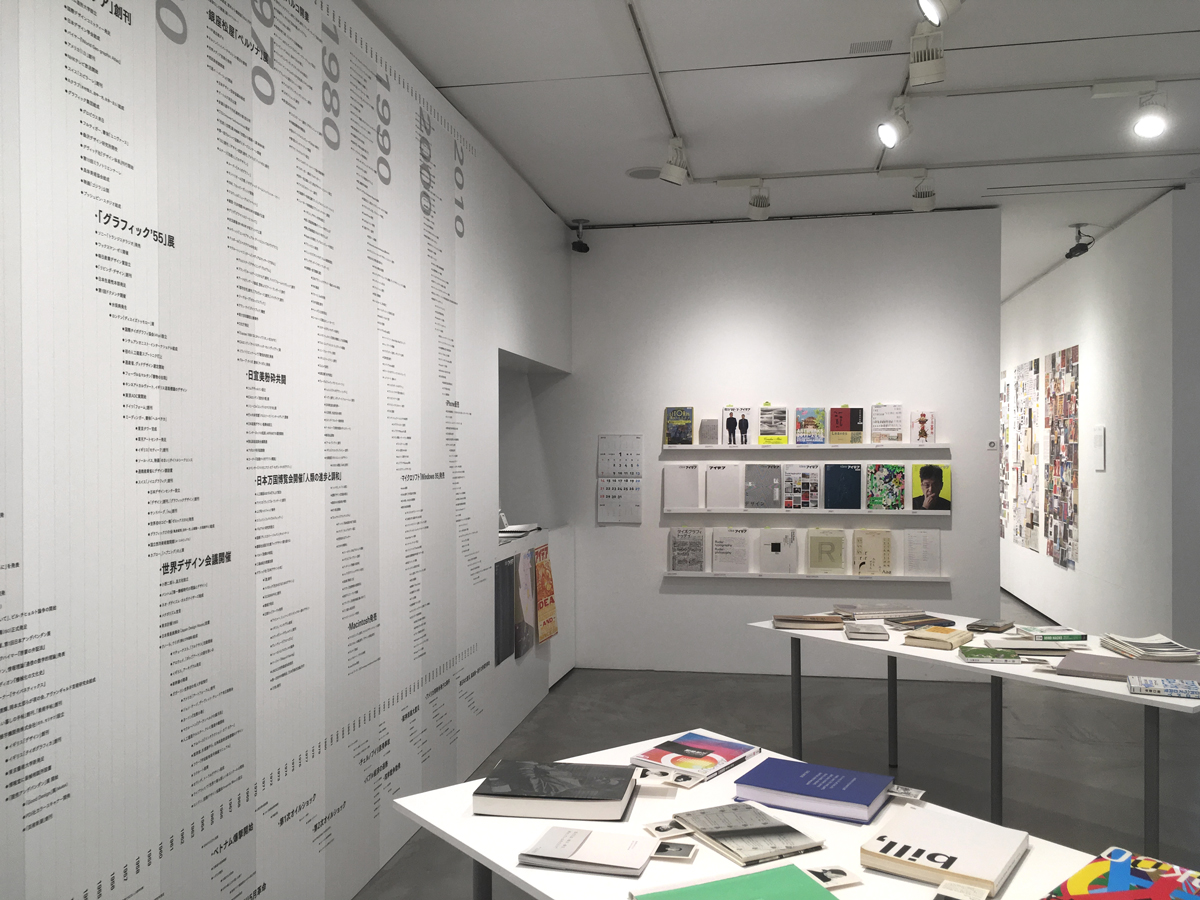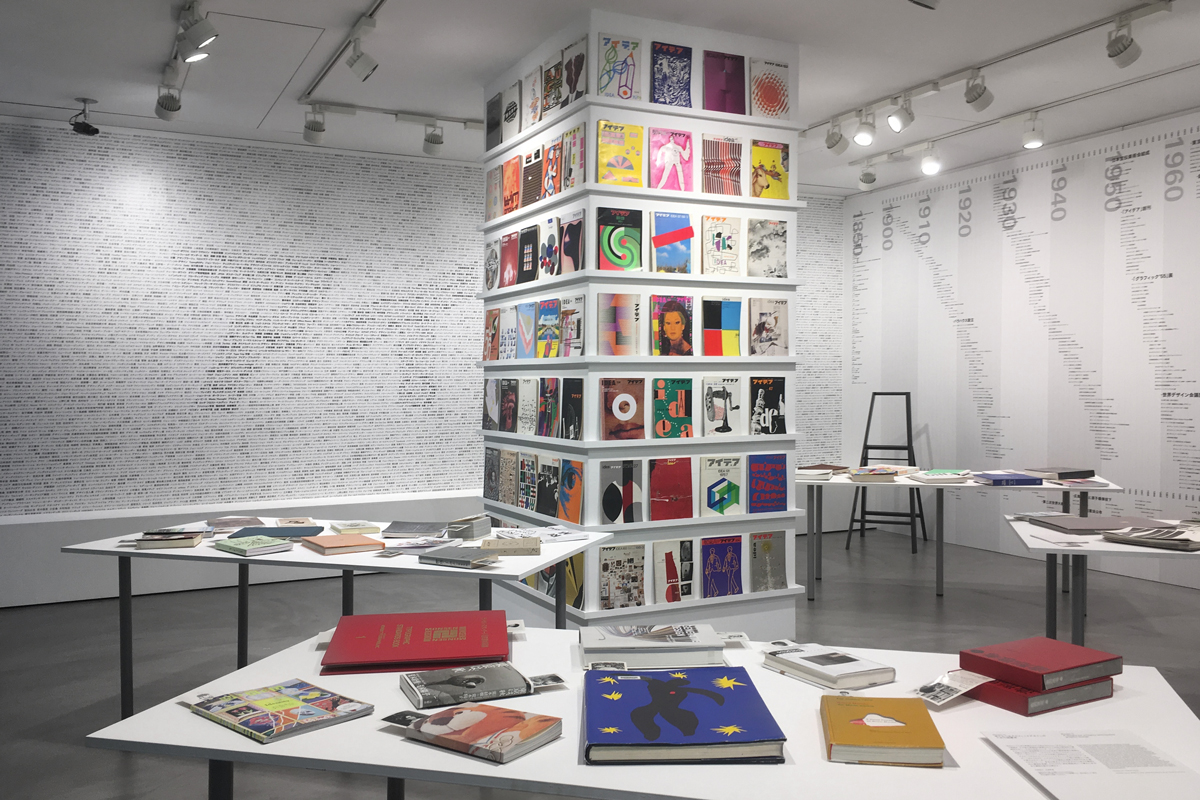CREATION GALLERY G8 x IDEA MAGAZINE Fragment Graphism
Graphic design in Japan has its own long and eventful history. This genre of design has been through the rain and storms, overcoming several great transitions since the early 20th Century (including the revival of its own identity along with the country’s struggle to regain its strength after the war or even the attempt to catch up with its skyrocketed economic growth, etc.). And it seems like in the past twenty years of technological progress that caused pretty much everything to be connected, Japanese graphic design continues to grow and develop its own course with a much more unique and stronger identity. Nevertheless, the succeeding question is ‘Amidst these changes, in what direction will Japanese graphic design move in the years ahead?’

At ‘Fragment of Graphism: An Alternative History of Graphic Design in Japan,’ the recently ended exhibition hosted by Creation Gallery G8, the past was revisited to understand future possibilities. But instead of simply presenting a chronological timeline of the graphic design history, the exhibition tried to showcase different stories and incidents from the perspective of IDEA, a magazine that has been with Japan’s graphic design community since 1953. The 120-square-meter space of the gallery is packed with an enormous amount of information that gets us questioning the future of graphic design. In addition to the exhibition of the magazine archive, which dates back to the very first issue, for viewers to actually read in Room B and the presence of 13 Japanese graphic designers who were invited to research and create their own reinterpretation of the history of graphic design in Room A, the last portion of the show featured Room C: A Library of Clues for the Graphic Design of Tomorrow. It asked each of the invited 43 new-generation graphic designers to choose 5 books before selecting only one book that could best answer the question ‘How can graphic design be updated?’ In a time when the design process is becoming only a step in the digital processing method, it gets us thinking about the possibilities of graphic design in Japan as well as new tendencies for this genre of design in Thailand at the same time.

กราฟิกดีไซน์ของญี่ปุ่นเป็นงานออกแบบที่มีประวัติศาสตร์ยาวนาน ผ่านร้อนผ่านหนาวและเจอกับการเปลี่ยนแปลงครั้งใหญ่ๆ มามากมายตั้งแต่ต้นศตวรรษที่ 20 (ทั้งการฟื้นฟูเอกลักษณ์ของประเทศหลังแพ้สงคราม หรือแม้แต่ความพยายามก้าวให้ทันการเติบโตทางเศรษฐกิจที่ก้าวกระโดดของตัวเอง ฯลฯ) แถมดูเหมือนว่าแค่ในช่วง 20 ปีที่ผ่านมานี้ ในยุคของข้อมูลที่อะไรๆ ก็ connect ถึงกันได้หมด กราฟิกดีไซน์ของญี่ปุ่นดูจะยิ่งเติบโตและพัฒนาแนวทางของตัวเองได้ชัดเจนแข็งแรงยิ่งกว่าเดิมเสียอีก แต่ถึงอย่างนั้น คำถามที่ตามมาก็คือ “ท่ามกลางการเปลี่ยนแปลงเหล่านี้ กราฟิกดีไซน์ของญี่ปุ่นในอนาคตต่อไปจะเปลี่ยนแปลงไปในทิศทางไหนกันแน่?”
ในนิทรรศการ ‘Fragment of Graphism: An Alternative History of Graphic Design in Japan’ ของ Creation Gallery G8 ที่เพิ่งจบไปได้ไม่นาน อดีตถูกหยิบยกมาพิจารณาใหม่อีกครั้งเพื่อทำความเข้าใจความเป็นไปได้ต่อๆ ไปของอนาคต แต่แทนที่จะเอาไทม์ไลน์ของประวัติศาสตร์มากางให้เราดูกันแบบปีต่อปี นิทรรศการนี้กลับพยายามนำเสนอเรื่องราวต่างๆ ผ่านมุมมองของนิตยสาร IDEA ที่อยู่คู่กับวงการกราฟิกดีไซน์ญี่ปุ่นมาตั้งแต่ปี 1953 เรียกได้ว่าบนพื้นที่แค่ 120 ตารางเมตร ของแกลเลอรี่แห่งนี้ ถูกอัดแน่นไปด้วยข้อมูลมากมายที่ชวนให้เราตั้งคำถามถึงอนาคตของวงการกราฟิกกันได้อีกเยอะเลย นอกจากในนิทรรศการจะมีการนำ archive ของนิตยสาร IDEA ตั้งแต่ฉบับแรกมาให้เราได้เปิดอ่านกันใน Room B และการเชิญกราฟิกดีไซเนอร์ของญี่ปุ่น 13 คนมาร่วมรีเสิร์ชและตีความประวัติศาสตร์กราฟิกกันใหม่ในแบบของตัวเองใน Room A แล้ว ส่วนสุดท้ายของงานอย่าง Room C: A Library of Clues for the Graphic Design of Tomorrow ที่ให้กราฟิกดีไซเนอร์รุ่นใหม่ 47 คน เลือกหนังสือมาคนละ 5 เล่ม และคัดเหลือเพียง 1 เล่ม โดยเป็นเล่มที่คิดว่าน่าจะบอกใบ้คำตอบให้กับคำถามที่ว่า “กราฟิกดีไซน์จะสามารถถูกอัพเดตได้อย่างไร?” ในยุคที่กระบวนการออกแบบต้องเผชิญกับการเป็นแค่ส่วนหนึ่งของการประมวลผลทางคอมพิวเตอร์ ก็ดูจะชวนให้เราได้ลองคิดสนุกๆ กันไปได้ว่ากราฟิกดีไซน์ของญี่ปุ่นจะเป็นอย่างไรต่อ
TEXT & PHOTO : PAPHOP KERDSUP
rcc.recruit.co.jp/g8



